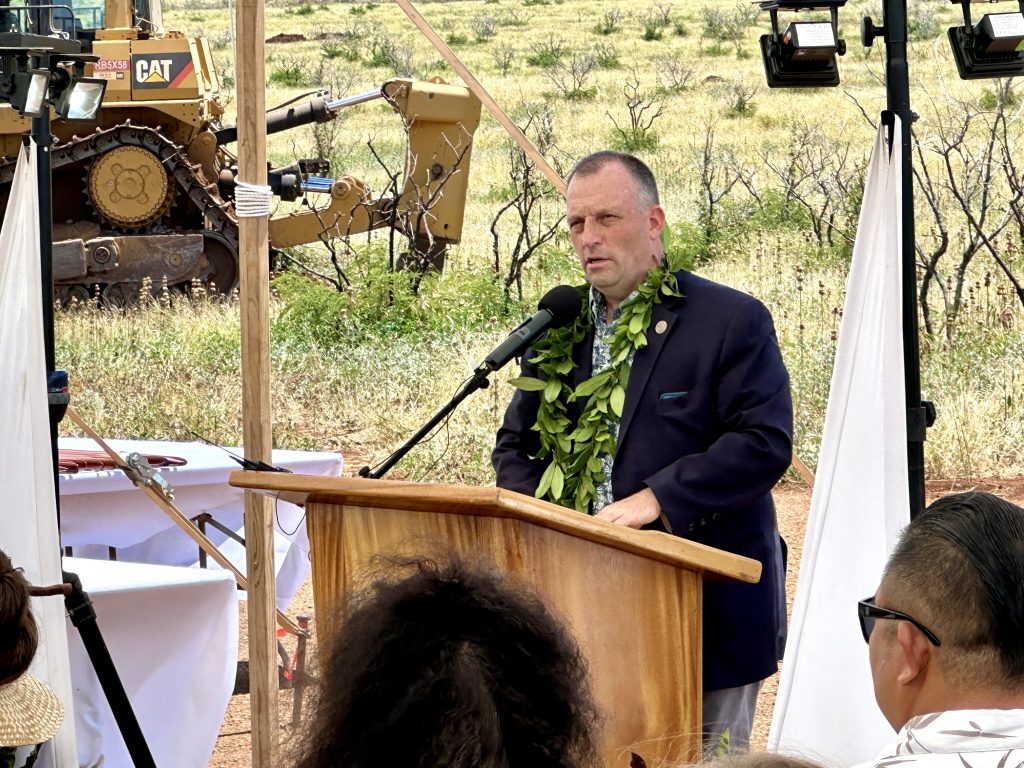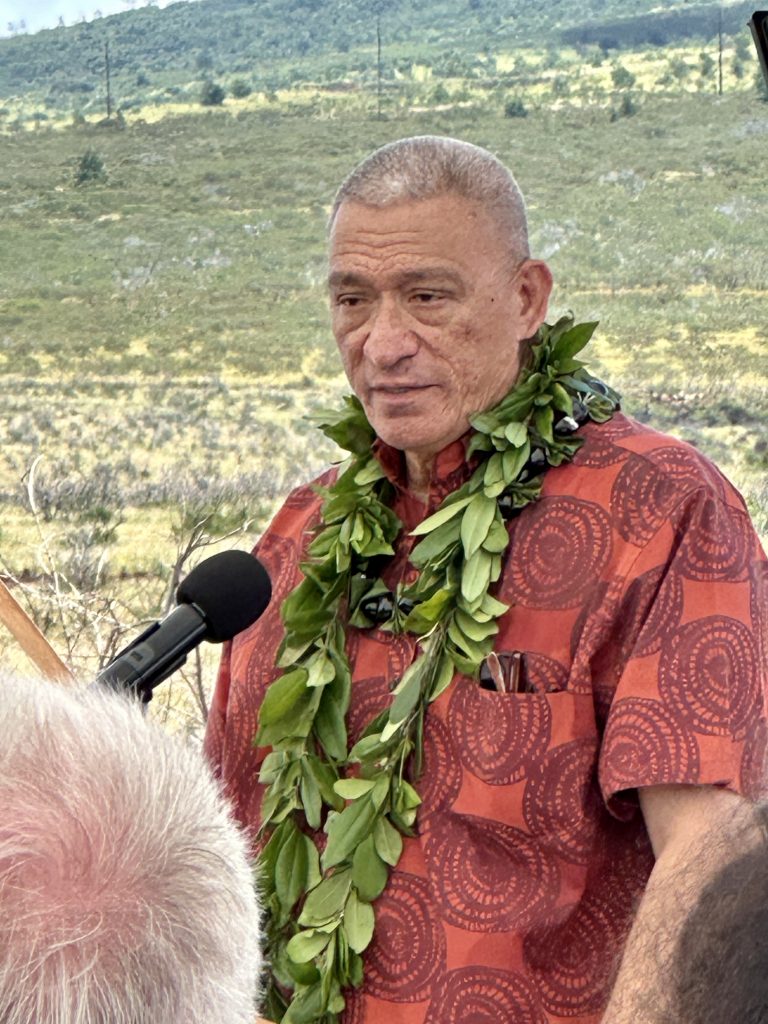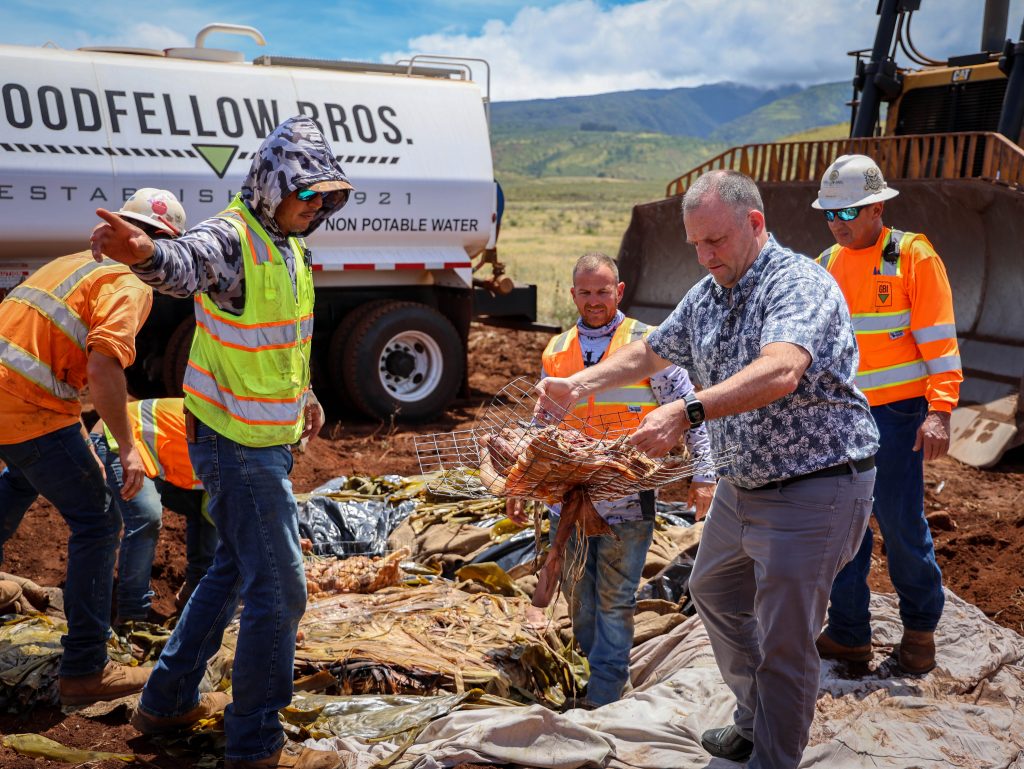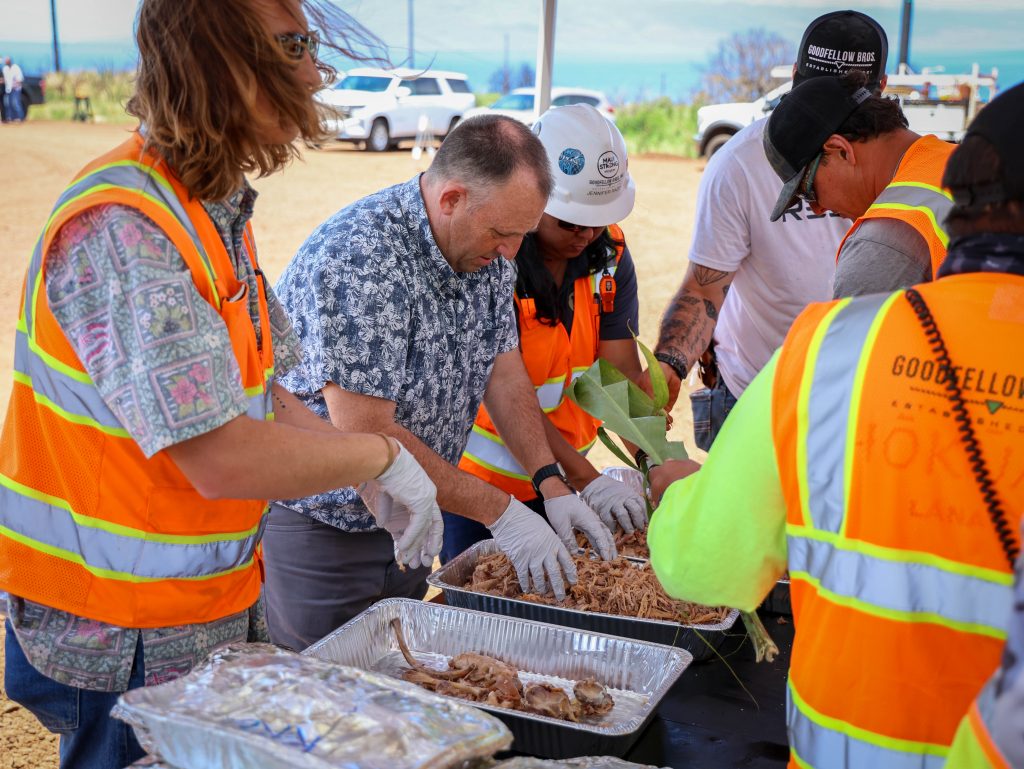Ka Laʻi Ola housing project launches with groundbreaking in Lahaina

The state of Hawai‘i and its partners broke ground and held a Hawaiian blessing ceremony Tuesday for Ka Laʻi Ola, a 450-unit temporary housing project in Lahaina to help displaced wildfire survivors who are ineligible for housing assistance from the Federal Emergency Management Agency.
The project’s first phase will have 270 units, with the first 100 units completed and ready for residents in the first week of August, said Department of Human Services Deputy Director Joseph Campos II said. Then, in the next two to three months, the remaining 180 units will be built, he said.
Campos said it was important to honor the wishes of displaced families who wanted to continue living in Lahaina. “What we heard from residents of Lahaina and West Maui was that they needed to be remaining in West Maui,” he said. “Many of them had school-aged children, or their work is here and to be placed in Central Maui or other locations was not feasible for their recovery.”
The temporary housing will be studios and one-, two-, and three-bedroom housing units located on 54 acres mauka of the fire-damaged Wahikuli Subdivision. The housing can be occupied for up to five years. The state’s project partners include Maui County, the state Department of Human Services, the Hawai‘i Community Foundation and HomeAid Hawai‘i.
When asked about infrastructure needed for the project, Kimo Carvalho, executive director of project developer HomeAid Hawai‘i, said the housing will be built to Maui County standards. Goodfellow Bros. is the construction contractor.
“While we will be moving fast, we are building to the standards that we have, and we will not compromise on health, safety, culture and environmental regulations,” Carvalho said.
The state has set aside $75 million for the $115 million needed to develop Ka Laʻi Ola. In addition, there’s $40 million contribution from Hawai‘i Community Foundation’s Maui Strong Fund and community contributions.
One of the project’s goals is to alleviate the state’s payment of approximately $56 million per month for temporary housing of wildfire survivors in hotels and other accommodations. The housing development will also provide services for survivors’ recovery.
After the wildfires, there were approximately 8,000 people left without housing, and as of Tuesday that number had been reduced by 76.5%, or to about 1,880, Green said. “So, three-quarters of the way we still have about 765 families as of last evening that were in hotels.”
In March, when more than 3,000 wildfire displaced residents remained in hotels, Green said he expected to have remaining residents housed by July 1 through rental and direct lease programs.
Green said the new housing project will help those who are most vulnerable—people displaced by the fires who are ineligible for FEMA assistance for a variety of reasons. Those include people who couldn’t qualify for homeless shelter or were not living on Maui long enough to qualify. Others didn’t lose their homes, but because of their close proximity to the fire zone still couldn’t go home, he said.
“We have to make sure everyone gets a home,” he said.
Aside from the upcoming FEMA project, the state will have 175 units available as of today for displaced residents at the former Haggai Institute in Kīhei, the governor said. Recently, the Hawaiʻi Housing Finance and Development Corp. purchased the 6.2-acre former Maui Sun Hotel for $38 million. The facility has been renamed Hale ʻO Lāʻie.
On Tuesday, the governor also pledged to sign Senate Bill 2919, now poised for passage at the state Legislature. The measure would clarify in state law that transient vacation rentals are not considered residential uses and may be phased out by the counties.
Green predicted that, following enactment of the legislation, people from the Mainland who own short-term rentals in Hawai‘i will decide that “it’s probably time to sell your property to local families.”
The project’s name translates to “the Place of Peaceful Recovery.” According to an announcement from the Governor’s Office, it “will provide a foundation for healing and a step forward toward long-term recovery for those enduring some of the greatest need.”
“Our people are in need of a place of peaceful recovery,” Mayor Richard Bissen said. The project’s new housing development “brings not only homes but a renewed sense of hope and spirit in our healing here on the west side and throughout Maui.”
Bissen said there’s progress with Maui’s response to the wildfire disaster, and the Ka Laʻi Ola project is “a huge step forward in these recovery efforts.”
The mayor also reported that more than 750 of 2,000 fire-impacted Lahaina property parcels have been cleared of debris, along with over 2,000 vehicles. So far, more than 116,000 tons of debris has been removed from Lahaina, he said.
“Moving forward, we will continue to work with our state, federal and private partners in addressing our recovery, including this piece of critical housing and infrastructure challenges,” Bissen said. “Above all, I believe it is all of our kuleana to keep our people of Maui Nui safe as we continue to push forward until all our survivors are cared for.”
The Ka La‘i Ola is part of an overall housing plan that includes 169 units developed by FEMA and set for its own groundbreaking within days on property nearby.
“Our decision to support Ka La‘i Ola is about bringing stability to our families and friends who suffered such extraordinary loss,” said Hawaiʻi Community Foundation Chief Executive Officer and President Micah Kāne, “and we are so grateful to our Maui Strong Fund donors for their generosity that made this possible.”
“HomeAid is most grateful for the opportunity to continue our mission here in West Maui, to build housing solutions for our most vulnerable people impacted by the wildfires,” Carvalho said. “Our work starts now. Our mission is clear. Temporary housing for wildfire survivors. Permanent infrastructure for Hawaiian beneficiaries beyond five years.”
Ka Laʻi Ola will provide comprehensive property management and community services, including access to disaster case managers, trauma-informed services, a resiliency center, childcare, healthcare facilities, gardens and playgrounds. The facilities are designed to support the residents’ emotional and physical well-being, helping them to rebuild their lives with dignity and security.
The Hawaiʻi Housing and Finance Development Corp. has leased the project land to the state Department of Human Services for five years. Then, the land and its permanent infrastructure will be transferred to the Department of Hawaiian Homelands, expediting the development of new homes for Native Hawaiian beneficiaries.
























